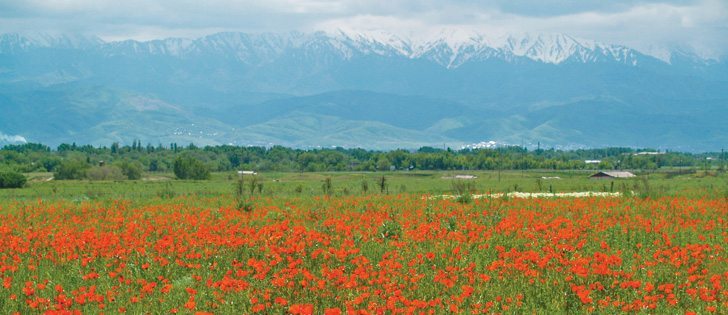Painkiller production | Researchers are studying the crop’s agronomics to gauge its suitability for southern Alberta and Saskatchewan
The vibrant red and orange of poppies may be added to the prairie crop palette if a plan to grow and process the crop proceeds.
It could be a lucrative cash crop for prairie farmers with estimates of $5,000 per acre.
Lethbridge based API Labs is in its fifth year of planning to grow thebaine poppies in Alberta and Saskatchewan and process them into painkillers to supply the North American market.
It now awaits a report from Health Canada’s Office of Controlled Substances, which will determine whether field trials planned in the County of Lethbridge this spring can proceed and if so, what security measures, if any, must be taken.
Read Also

Pakistan reopens its doors to Canadian canola
Pakistan reopens its doors to Canadian canola after a three-year hiatus.
API president Glen Metzler said thebaine poppies cannot be made into heroin. Conversion of thebaine to various painkillers and sedatives requires complex processing.
“Thebaine is not a narcotic substance. It is a controlled substance but it is not a starter for illicit material,” he said.
Poppies are cultivated for the pharmaceutical industry in Australia, China, Czech Republic, France, Hungary, India, Japan, Slovakia, Spain, Macedonia, Turkey and the United Kingdom.
Thebaine poppies for pharmaceuticals are grown in Spain, France and Australia. Canada is the only G8 country that does not cultivate poppies or process them for medical use.
Metzler said Canada’s retail sales of drugs derived from thebaine were worth more than $600 million in 2011. In the United States, thebaine-derived drugs were worth more than $5 billion last year.
Codeine, oxycodone, methadone and other commonly used drugs can be derived from thebaine poppies.
“Ten of the 200 most prescribed drugs in Canada are derived from thebaine,” said Metzler.
He sees major economic benefits if Canada could grow and process its own thebaine and also supply the U.S. market.
As well, poppy seed for food use could be worth another $50 million if Canada could supply North American poppy seed needs, he said. At present, all poppy seed used for food in North America is imported.
Metzler estimates potential returns of $5,000 per acre for farmers, a figure based on the Australian experience.
“That’s what’s really got our attention and then when we started looking at the research and realized that Australia uses two percent of the world demand of narcotic medications and Canada uses 5.8 percent, why are they growing it and we are not?”
Plant pathologist Ieuan Evans, a technical adviser for API, thinks the crop can be easily grown on the Prairies, particularly in view of its short season and frost tolerance.
“I wouldn’t see much of a challenge at all,” he said.
Reglone is suited for weed control in the crop, and although there are diseases that affect poppies, they can be mitigated by using clean seed and close monitoring.
Evans said the small seed will likely require equipment modifications and may have to be scattered on the soil surface in moist conditions to get good germination.
A five-member team of researchers at the University of Lethbridge, headed by biotechnologist Igor Kovalchuk, has been studying the crop’s agronomics as well as processing methods to extract desired alkaloids found in the straw.
Southern Alberta’s long summer days and cool nights are expected to suit poppies. They are the same conditions that favour growth of sugar beets and corn under irrigation in the region.
Irrigated versus dryland poppies will be one focus of study, Metzler said.
“That’s part of the research we’re looking at now. Australia is the only country that cultivates poppies under irrigation. Everyone else is dryland, France and the U.K., for example, and Spain, is all on dryland.”
API promotional information suggests potential for 25,000 acres of the crop by 2015. Metzler said the plan is to split production between Alberta and Saskatchewan.
Adding Canadian crop would not displace production in other countries because demand for the drugs produced from poppy alkaloids is growing.
“In the last five years, worldwide poppy production increased by 36 percent,” said API literature. “Thebaine poppy production has increased by 209 percent.”
As for the processing side, API predicts a facility could create 300 jobs and a climate for ongoing research.
- Thebaine is a schedule 1 controlled substance under the Controlled Drugs and Substances Act.
- Fifteen countries legally grow opium poppies for pharmaceuticals.
- Spain, France and Australia grow thebaine poppies for pharmaceuticals.
- Consumption of thebaine-based medications increased 26-fold globally from 1989-2009.
- Thebaine poppy production has increased by 209 percent in the last five years.
- Canada’s annual sales of medication derived from poppies are more than $565 million per year.
- Canada is the second largest importer of codeine in the world. The U.S. is the largest.
- In 2010, the International Narcotics Control Board said global stocks of thebaine were 17 percent undersupplied.
access=subscriber section=news,none,none
















